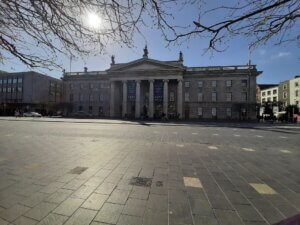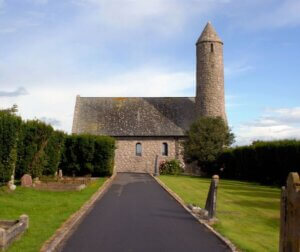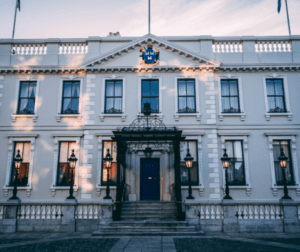It’s hard not to fall in love with Ireland. Its wonderland of green fields looking like a patchwork quilt from the air, its rich historical heritage, and the laidback nature of its people seems to capture all who visit.
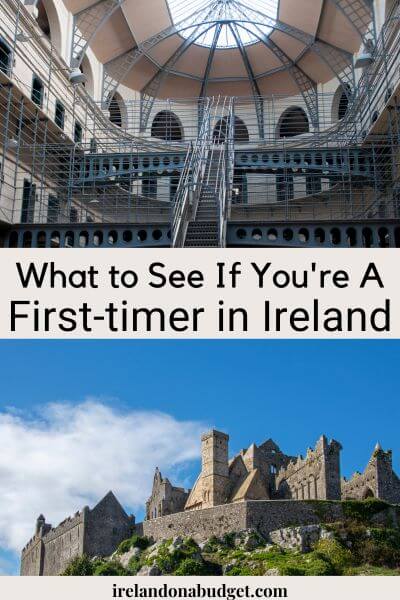 This post contains affiliate links, and I may earn compensation when you click on the links at no additional cost to you.
This post contains affiliate links, and I may earn compensation when you click on the links at no additional cost to you.
If you’re a first-time visitor, there’s a lot to take in, which is why knowing the country’s famous landmarks beforehand is a good starting point for your dream vacation to Ireland, especially those landmarks that tell a story about Ireland’s fascinating history.
It will also give you an idea of what you can see while you’re there.
Here is a sampling of the famous landmarks in Ireland that you could see on a typical 10-day self-drive vacation starting in Dublin.
If you’d prefer to see Ireland on a group tour, many of the reputable companies in Ireland will take you to these sites and more depending on their itinerary.
DUBLIN
Dublin Castle
For over 700 years, the English used Dublin Castle as both a ceremonial and an administrative center.
From the late 17th and 18th centuries, the castle served as the residence of the Viceroy of Ireland, who was the main executor of British rule on the island.
It wasn’t until 1922 that the castle was handed over to the newly formed Irish government, marking a watershed moment in Irish history.
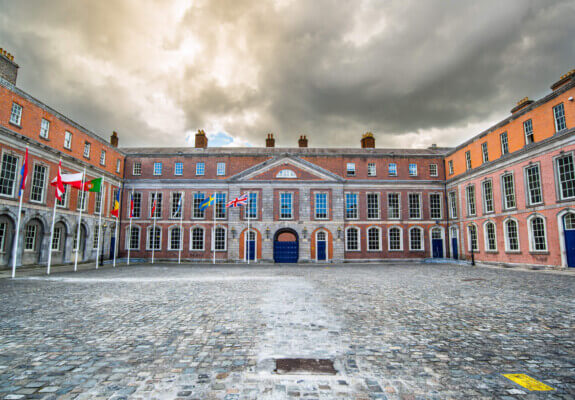
One of the highlights of a guided tour is the castle’s subterranean excavations, evidence of the original Viking as well as medieval structures that it was built on.
Save Money on Your Trip to Dublin with the Dublin Go City Pass
St. Patrick’s Cathedral
St. Patrick’s Cathedral is Ireland’s largest church building and where St. Patrick baptized local Celtic chieftains during the 5th century.
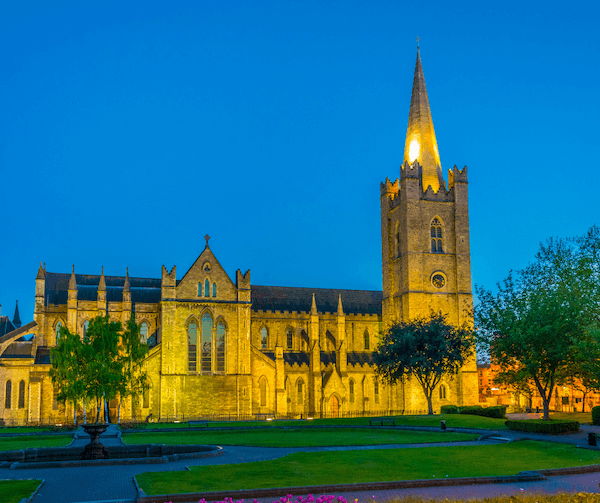
Over the years, the building endured a lot of storm and fire damage, and the notorious Oliver Cromwell once used it as a stable, a practice that he was commonly known for around Ireland during his reign of terror in the mid-1600s.
The Irish writer Jonathan Swift served as its dean in the middle of the 18th century and you’ll find his grave to the right of the cathedral entrance.
Trinity College
No visit to Dublin is complete without visiting Trinity College and the famous Book of Kells.
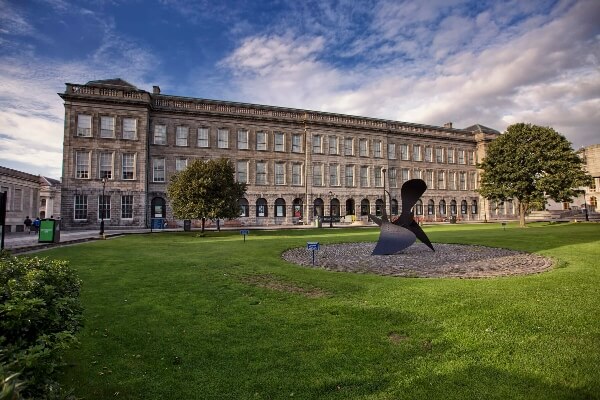
Trinity is one of the landmarks from Irish history founded in 1592 by Queen Elizabeth I to prevent young, wealthy Irish Protestants from studying in Europe and subsequently coming under the influence of the Pope and the teachings of the Catholic Church.
Some of Trinity’s famous graduates include Swift, mentioned above, Samuel Beckett, and Oscar Wilde.
Kilmainham Gaol (Jail)
A visit to this popular and famous landmark from Irish history will tell you all you need to know about Irish resistance to British rule over the centuries.
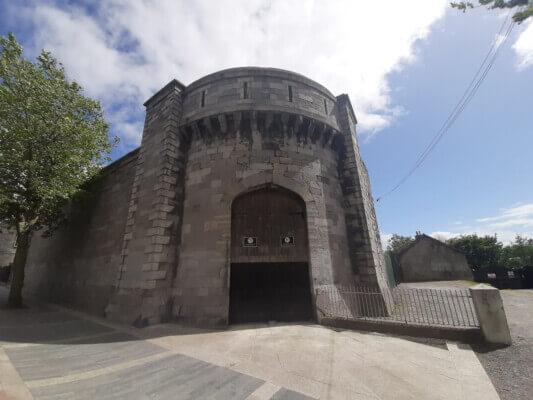
The building, which was built between 1782 and 1795, is most famous for being the site where 14 men were executed shortly after the Easter Rising of 1916.
Previous leaders of Ireland’s many rebellions were also confined here, including Robert Emmett, Thomas Francis Meagher, Charles Stewart Parnell, and others.
Explore Castles & Countryside in Ireland with Aer Lingus Vacations
KILKENNY
Kilkenny Castle
Once the stronghold of the powerful Butler family, Kilkenny Castle has a history going back to the 12th century.
Before the present structure was constructed, a wooden tower stood in its place, built by the Anglo-Norman conqueror Strongbow (otherwise known as Richard de Clare).
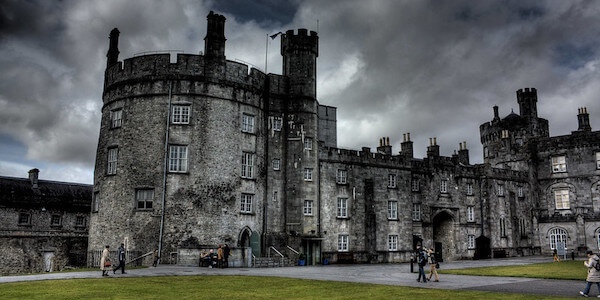
The castle was bought by the Butlers in 1391, with their descendants continuing to live at the castle until 1935.
A highlight of your visit to Kilkenny Castle should be the Long Gallery, which showcases portraits of the Butlers and an impressive ceiling that contains Celtic, medieval, and Pre-Raphaelite motifs.
TIPPERARY
Rock of Cashel
This ancient fortress, the seat of power for the kings of Munster for several hundred years prior to the Norman invasion of Ireland in 1169, will no doubt take your breath away at first sight.
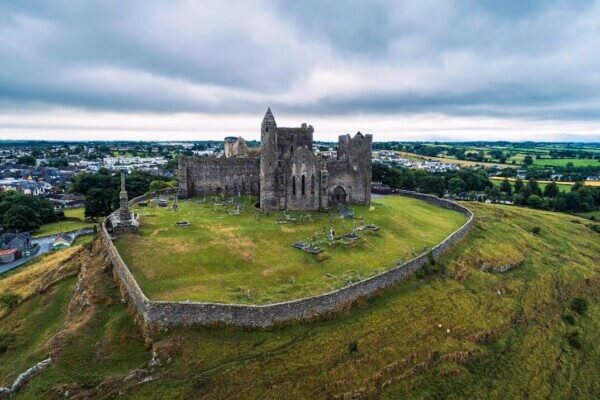
Towering over the beautiful Co. Tipperary countryside, the picturesque complex of ancient buildings contains some of the most impressive medieval architecture in all of Europe.
The Rock of Cashel includes a complete round tower, a 13th-century Gothic cathedral, and a Romanesque chapel within its confines, all making it a once-powerful religious center.
Be sure to take a 45-minute tour of what is considered one of the most famous landmarks in Irish history.
Join a Small-Group Tour of Wicklow, Powerscourt, and Glendalough from Dublin
WICKLOW
Glendalough Monastic Site
This famous monastic site in beautiful Co. Wicklow once rivaled the equally important Clonmacnoise in Ireland’s midlands.
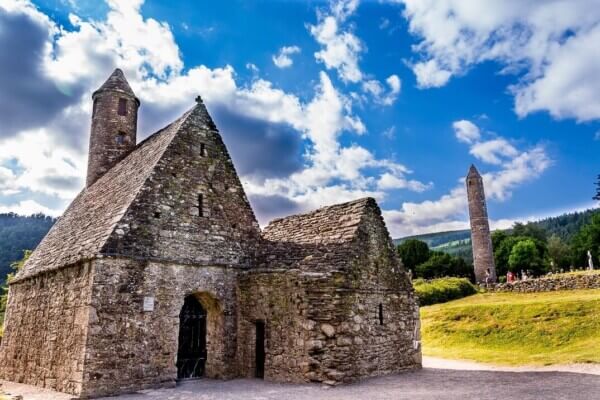
Founded by St. Kevin in the 6th century, the monastery was a favorite target for the Vikings who ransacked it several times, and later for the English who almost destroyed it in 1398.
A tour of Monastic City will take you through the only surviving monastic gateway in Ireland and then on to the significant sites within the complex, including the round tower, the cathedral, St. Kevin’s Kitchen, St. Kevin’s Cell, and much more.
CORK
Blarney Castle & Gardens
Aside from the yarn associated with the Blarney Stone, Blarney Castle itself is one of the strongest surviving tower houses in Ireland.
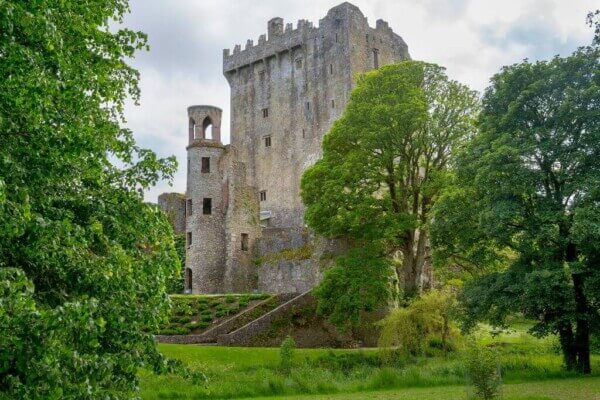
What you’ll see today is the third structure on this site, the first one having been built in the 10th century, later rebuilt in 1210 and after being demolished, rebuilt again in 1446 by the King of Munster Dermot McCarthy.
In addition to climbing the steps to the stone in search of eloquence and the skill of flattery, be sure to explore the castle’s gardens as well.
KERRY
Skellig Michael
Located in the windswept North Atlantic off the coast of County Kerry is Ireland’s most remote religious settlement known as Skellig Michael.
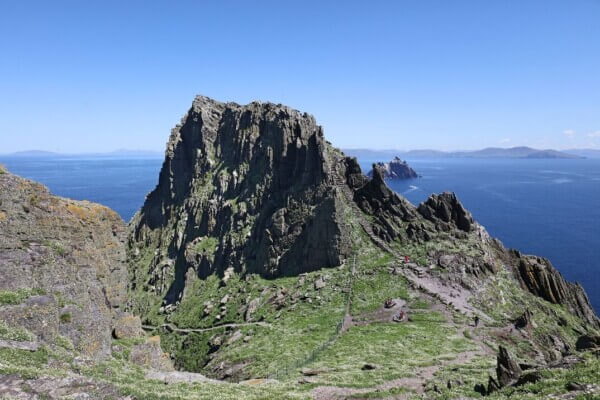
The ancient monastery is located on an island that is one of three islands collectively known as The Skelligs.
Monks arrived in this lonely spot in the 6th century and are believed to have stayed there until the 12th or 13th centuries. Their remaining oratories and beehive cells are evidence of a life spent in prayer and devotion to God.
Tickets to this sought-after attraction, which is also famous for being the location of two Star Wars movies, are often hard to get, so book early.
Tours are available from Portmagee, Valentia, and Ballinskelligs.
Get Your Free Ireland Activities List
CLARE
Poulnabrone Dolmen
This is one of Ireland’s most photographed monuments, which was built more than 5,000 years ago.
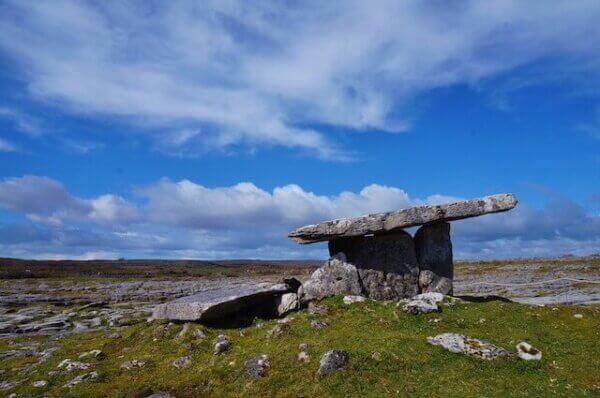
Located in the Burren in Co. Clare, the dolmen is one of 172 capstones on the island of Ireland.
The area around it was excavated in 1986 and the remains of 21 people were found there, as well as pieces of pottery and jewelry.
GALWAY
Dunguaire Castle
Dunguaire Castle stands in the spot where the royal palace of Guaire, King of Connacht, once stood.
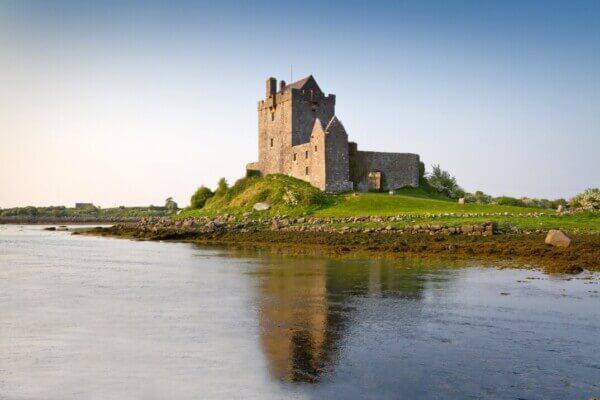
The castle, located on the southeastern shores of Galway Bay, was built in 1520 by the Hynes clan, descendants of Guaire.
Little is known about its construction, but 100 years later, it was gifted to Oliver Martyn, who had shown loyalty to the British Crown.
Martyn’s son, Richard, later became mayor of Galway.
In 1924, it was bought and restored by the surgeon and writer Oliver St. Gogarty and became a favorite gathering place for Irish literary giants George Bernard Shaw, J.M. Synge, WB Yeats, Lady Gregory, and others.
MAYO
The Ceide Fields
The most extensive Stone Age site in the world is in a windswept part of County Mayo.
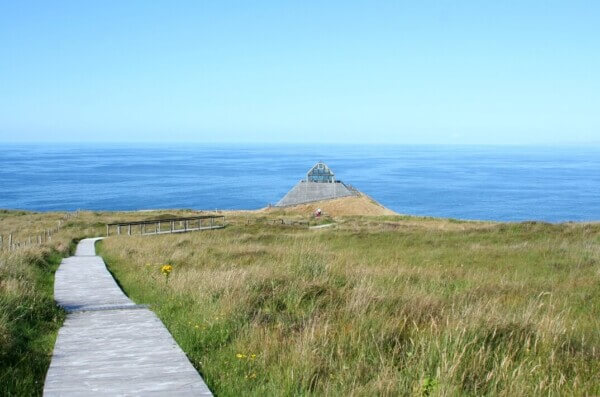
The Ceide Fields are believed to be about 6,000 years old. The site was once covered by a blanket bog until the 1930s when a local schoolteacher noticed a pile of stones at the bottom of the bog while cutting turf.
Be sure to go to the visitor center first to learn about this fascinating place, another one of the famous landmarks from Irish history.
SLIGO
Knocknarea
Want fabulous views of the Wild Atlantic Way in County Sligo? Climb Knocknarea, reputed to be the gravesite of Maeve, queen of Connacht.
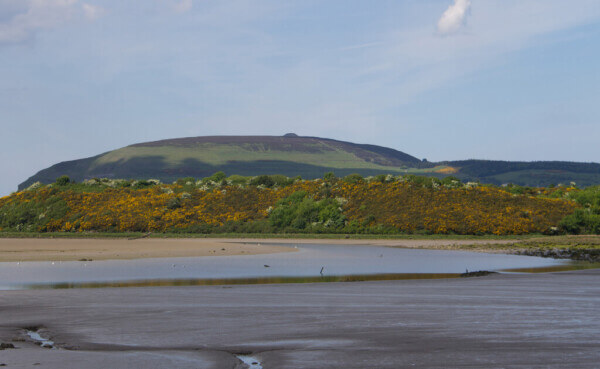
The 40,000 tons of stone have never been excavated despite the belief that a tomb the size of Newgrange is said to lie beneath.
Archaeologists believe it was constructed around 3,400 B.C.
The 6-km (3.7 miles) Queen Maeve Trail will take you to the summit, another famous landmark from Irish history.
See Ireland with a Local Tour Guide
DONEGAL
Grianán of Aileach
Sitting on a hilltop in Inishowen, County Donegal is a stone fort that is well worth a visit.
The view alone from the top of the fort is breathtaking, with views of Lough Foyle and Lough Swilly below.

The fort dates to about 1,700 B.C. and is linked to the first ancient peoples of Ireland, the Tuatha de Danann, who came to Ireland long before the Celts.
People say you can see three counties from the top of this historic site, which is associated with many legends, including the fact that St. Patrick is said to have baptized the local chieftain here in 450 AD.
ANTRIM
Dunluce Castle
Built by the MacQuillan clan around 1500, the castle sits on a precarious clifftop location where views of the County Antrim coastline are outstanding.
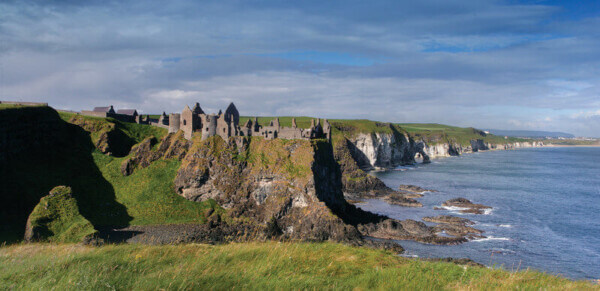
Perhaps the more interesting story associated with this beautiful ruin on Northern Ireland's Coastal Causeway route is the fact that for two centuries it was the seat of the MacDonnell family, the Earls of Ulster from 1620 onwards.
Part of the castle, including its kitchen, collapsed into the ocean in 1639, bringing with it several servants.
Shrouded in myths and legends, you can imagine the castle in its heyday as you walk among its ruins.
A popular movie location site, the building was cast as Castle Greyjoy in the Game of Thrones series and it was also the inspiration for the Narnia series, written by Belfast-born C.S. Lewis.
MEATH
Newgrange, Hill of Tara, Trim Castle
There are several famous landmarks from Irish history in County Meath. They include the Brú na Bóinne complex, of which Newgrange is the most famous, the Hill of Tara and Trim Castle.
Newgrange
The Newgrange passage tomb is older than Stonehenge and the pyramids.
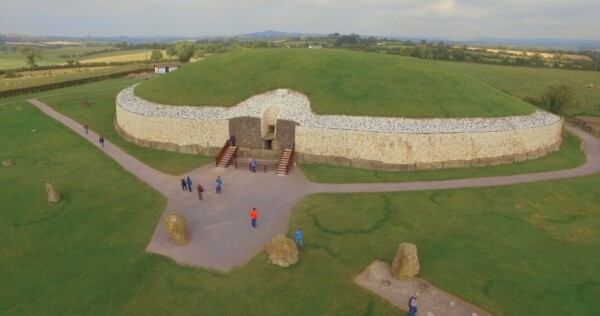
People gather each year on the shortest day of the year, the Winter Solstice, to witness the annual solar alignment when light from the sun illuminates the tomb’s inner chamber.
The ancient passageway, which has remained intact since its original completion in 3,200 B.C., is about 62 feet long (19 meters) and leads into a chamber that has three alcoves.
You will need to go to the visitor center first before seeing Newgrange and the other ancient monuments in the Brú na Bóinne complex.
The Hill of Tara
The Hill of Tara is known as the inauguration site of Ireland’s high kings prior to the arrival of Christianity.
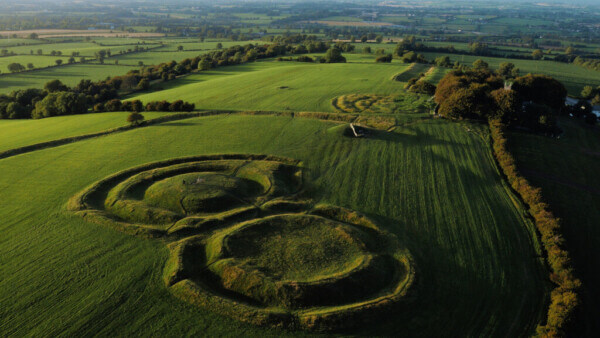
One can only imagine the halls and palaces that existed in this important spot, where you can find monuments from the Neolithic through the Iron Age periods.
Trim Castle
Located on the south bank of the River Boyne, the 3-story Trim Castle is the largest Anglo-Norman fortification in Ireland.
King Henry II granted Norman Hugh de Lacy the land on which to build a castle.
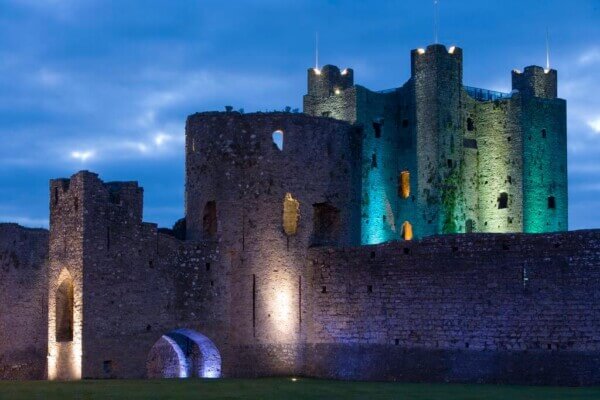
During the 15th century, the Irish Parliament met at Trim Castle several times. A mint also operated from there at the time. In 1649, during the Irish Confederate Wars, it was occupied by Oliver Cromwell’s army.
In modern times, Trim Castle served as the backdrop for the movie “Braveheart.”
Are any of the above-mentioned famous landmarks from Irish history on your itinerary list? Or perhaps you’ve seen some of them before. Let me know in the comments below.



